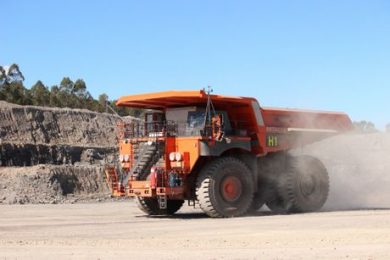Following extensive trials and tests at the Meandu coal mine in Australia, Hitachi’s mining truck haulage automation system will soon be applied commercially at mining customer sites. In 2012, Hitachi Construction Machinery Co Ltd says it “commenced development of an autonomous haulage system that will leapfrog over current market offerings.”
The system combines technologies and expertise from throughout Hitachi Group Companies including automotive, communication, robotics, public transport and of course, mining equipment and fleet management. This system can be broken down into three layers of innovation.
Naoto Sannomiya, Manager, Technical Marketing Support, International Operations, Mining Group at Hitachi Construction Machinery comments: “The first layer is the fleet management system (FMS) – the productivity layer. Wenco International Mining Systems’ revolutionary product, Wencomine, is fully integrated into Hitachi Autonomous Haulage System. It acts as the primary system for head office, and its intuitive interface supports the operator in managing multiple haulers with simple navigation of drag and drop.”
The second layer is the traffic control system (TCS). The DNA of Hitachi’s TCS is shared with one of the busiest train systems in the world: the Tokyo metropolitan. Averaging about 770,000 commuters a day, this system provides uncompromising accuracy, safety and efficiency. “This technology is embedded into Hitachi’s TCS which connects designated points, creates the haul route, divides it into sections, and sends specific instructions to each vehicle. Ever-changing haul road designs can also be quickly surveyed and adapted into the haulage network with this system.”
The third layer of this system is the vehicle intelligence itself. An autonomous truck contains a built-in computer network which receives sectioned haul route information, known as “permitted segments”, from the TCS. The truck then drives within these segments, sticking to the designated route with a margin of error spanning mere centimetres. As the truck approaches the end of a permitted segment, it sends a request to the TCS for information on the next segment. If the information is provided the truck continues, but if the information is not provided the truck will come to a controlled stop at the end of the permitted segment; this is called Exclusive Permission Control. By limiting constant communication between the truck and the FMS, Hitachi’s autonomous technology is able to control up to 100 vehicles under the one system.
These three core layers operate on an infrastructure consisting of a RTK-GNSS (Real Time Kinematic Global Navigation Satellite System), Wi-Fi network, and a server. To ensure seamless communication throughout a site, multiple repeater stations are installed additional to the RTK-GNSS base station.
“Hitachi’s autonomous technology provides a flexible, accurate and consistent transport system, and its spin of products also supports manned hauler operations in surpassing their safety and productivity targets.”










